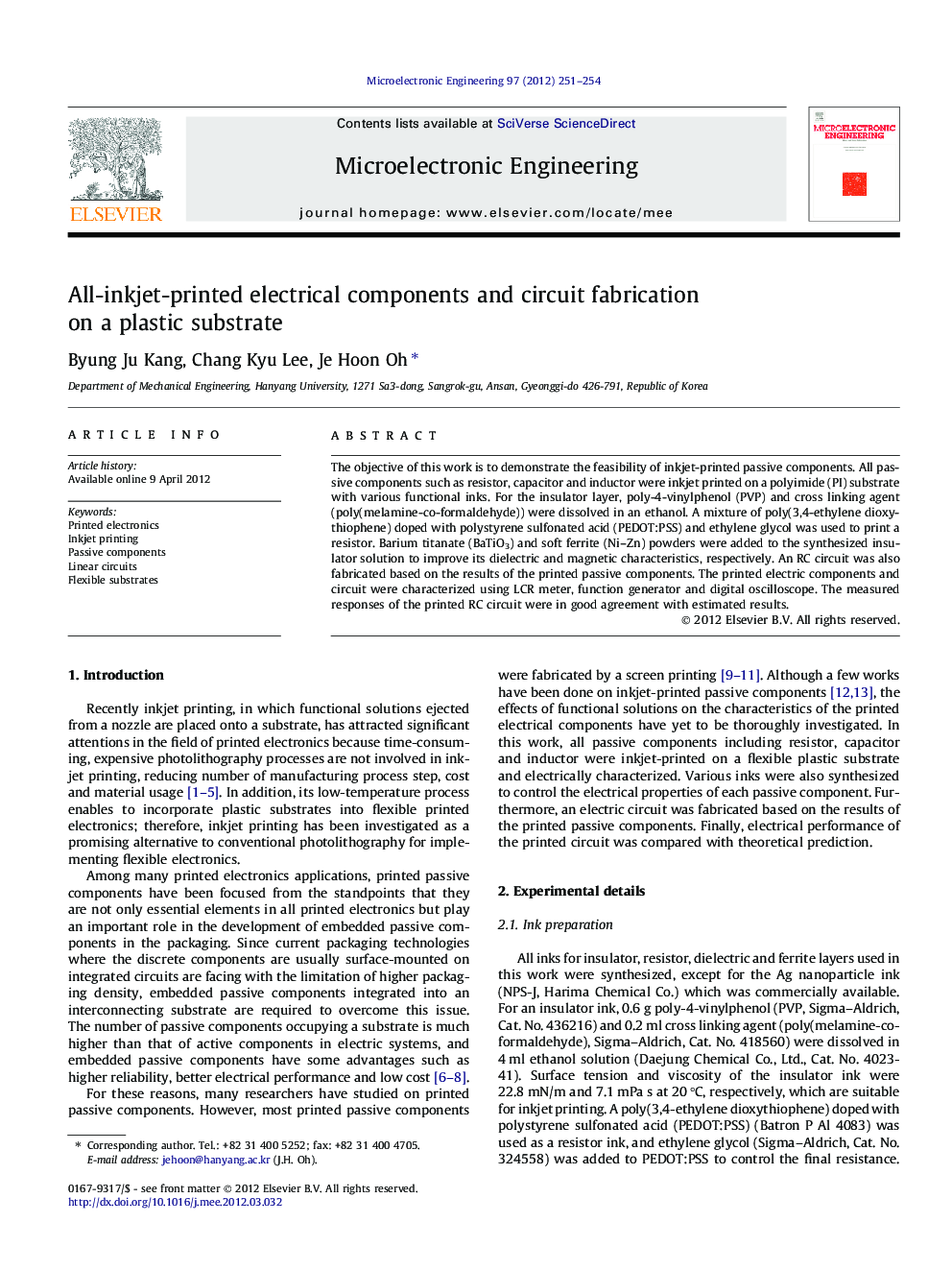| Article ID | Journal | Published Year | Pages | File Type |
|---|---|---|---|---|
| 544382 | Microelectronic Engineering | 2012 | 4 Pages |
The objective of this work is to demonstrate the feasibility of inkjet-printed passive components. All passive components such as resistor, capacitor and inductor were inkjet printed on a polyimide (PI) substrate with various functional inks. For the insulator layer, poly-4-vinylphenol (PVP) and cross linking agent (poly(melamine-co-formaldehyde)) were dissolved in an ethanol. A mixture of poly(3,4-ethylene dioxythiophene) doped with polystyrene sulfonated acid (PEDOT:PSS) and ethylene glycol was used to print a resistor. Barium titanate (BaTiO3) and soft ferrite (Ni–Zn) powders were added to the synthesized insulator solution to improve its dielectric and magnetic characteristics, respectively. An RC circuit was also fabricated based on the results of the printed passive components. The printed electric components and circuit were characterized using LCR meter, function generator and digital oscilloscope. The measured responses of the printed RC circuit were in good agreement with estimated results.
Graphical abstractFigure optionsDownload full-size imageDownload as PowerPoint slideHighlights► All-inkjet-printed passive electrical components on a flexible plastic substrate. ► Resistance-controllable resistors with a mixture of PEDOT:PSS and ethylene glycol. ► Dielectric layer printed with BaTiO3 shows an increase in capacitance. ► Inductance is increased by printing a Ni–Zn ferrite film on a flat spiral inductor. ► All-inkjet-printed RC circuit functions well as a low pass filter.
